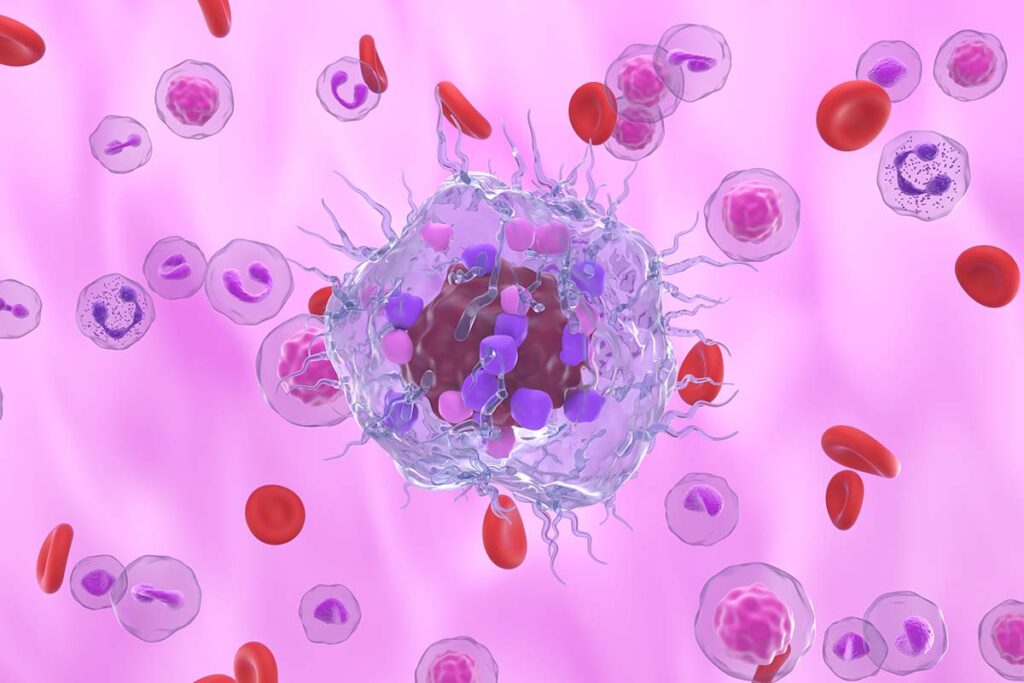Because of its name, you may think that neuroendocrine cancer is somehow related to both nerve cells and hormones, but that’s not really the case. The tumors begin in endocrine cells — meaning they can develop anywhere the hormone-producing cells are present.
That said, the most common places in the body for neuroendocrine cancer to start growing are the gastrointestinal (GI) tract, lungs, and pancreas.
Neuroendocrine cancer is hard to understand because it not only develops in different parts of the body, but tumors also act and grow differently. That means symptoms and treatments also vary. And there’s no real known cause.
Clear as mud? Let’s dive in a little more.
What Is Neuroendocrine Cancer?
Neuroendocrine tumors are rare, but the number of people diagnosed with them is rising. That’s likely due, in part, to better testing.
These tumors start in the body’s endocrine cells, which are in charge of producing hormones and releasing them into the bloodstream. These hormones act as chemical messengers — they control and coordinate activities throughout the body.
While there are different types of neuroendocrine tumors, there are also different classifications.
To begin with, neuroendocrine tumors can be either functional, meaning they produce excess hormones and can cause hormone-related symptoms, or nonfunctional, meaning they don’t.
They also can be either indolent or aggressive. Indolent tumors are slow growing. There’s a lower risk of spread (or metastasis) with indolent tumors. Aggressive tumors grow quickly. They’re more likely to spread.
Still, it’s important to note that all neuroendocrine tumors are malignant, or cancerous.
Comparing the Different Types of Neuroendocrine Tumors
GI
Most often, neuroendocrine cancer forms in the GI tract. That includes the stomach, intestines, and appendix. But most begin in the small intestine.
GI neuroendocrine tumors are also known as GI carcinoid tumors.
Lung
After the GI tract, the second most common part of the body for neuroendocrine cancer to develop is the airways of the lungs.
These lung tumors can be further broken down by how different cancer cells appear compared to normal cells. If the cells look like normal cells, the cancer is considered low-grade. If they look much different from normal cells, the tumor is considered high-grade.
In addition, this type of cancer can be further classified as either small-cell neuroendocrine carcinoma or large-cell neuroendocrine carcinoma.
Pancreatic
Pancreatic neuroendocrine cancer is rarer than GI and lung.
These tumors that start in the pancreas are most often nonfunctional and don’t cause symptoms. Still, there are functional pancreatic neuroendocrine tumors that cause symptoms. Some of these include:
- Gastrinomas
- Somastatinomas
- Insulinomas
- Glucagonomas
- VIPomas
Each of these functional pancreatic neuroendocrine tumors is named after the hormone it produces. For example, gastrinomas produce too much gastrin, which can lead to too much stomach acid.
Neuroendocrine Cancer in Other Parts of the Body
It is possible for neuroendocrine tumors to develop in parts of the body.
These rarer types of cancer can develop in the:
- Adrenal glands (called pheochromocytoma if the tumor grows in one of the glands, and paraganglioma if the tumor grows outside the glands)
- Skin (called Merkel cell carcinoma)
- Thyroid (called medullary thyroid cancer)
Symptoms of Neuroendocrine Tumors
Some people with these tumors have symptoms, but not everyone does. If you have symptoms, what kind you have will likely depend on the location of the tumor. For example, if you have a tumor in your lung, you may have chest pain or trouble breathing.
Symptoms also may depend on whether the tumor is functional or nonfunctional.
There are some general symptoms common to neuroendocrine tumors, however. Some of these include:
- Coughing or wheezing
- Feet or ankle swelling
- High blood pressure
- Redness and warmth in the face or neck, without sweating (also called flushing)
- Unexplained weight loss
- Weakness
Because the symptoms are so general, though, they often can be misinterpreted as something else. (Like abdominal discomfort and diarrhea being mistaken for irritable bowel syndrome, or IBS.) That’s why it’s so important to talk to your doctor about any concerns you have.
Treating Neuroendocrine Cancer
As with every other aspect of neuroendocrine cancer, there’s no one-size-fits-all when it comes to treatment.
If you’re diagnosed with a neuroendocrine tumor, your treatment will likely depend on the location of your tumor, how it’s classified, your overall health, and other factors.
Some common treatments for these tumors include:
- Active surveillance (watching and waiting to see if treatment is needed)
- Chemotherapy
- Hormone therapy
- Surgery
- Radiation therapy
- Targeted therapy
In addition, radioactive drugs are often used to treat some kinds of neuroendocrine tumors. They work by binding to receptors on the cells of certain cancers and delivering radiation directly to the tumor.
